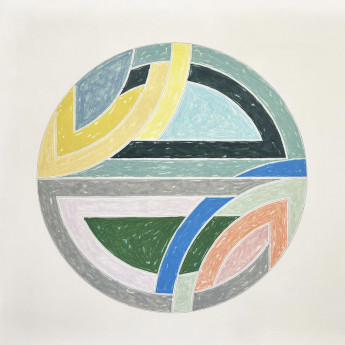
Details
Artist
Styles
// Moon Light on the Table by Wang Huai-Qing is a limited edition etching from 2008, created in an edition of 60. This artwork features a large, abstract black shape with angular, asymmetrical sides, resembling a draped tablecloth over a table. The texture of the black form contrasts with the rough, earthy background, suggesting a worn, aged surface. Curved, spiral-like shapes protrude from beneath the dark mass, adding a surreal quality. The stark contrast between the dark central form and the lighter, textured background evokes the subtle, quiet presence of moonlight illuminating the edges. Wang’s piece uses abstract forms to explore themes of emptiness, shadow, and illumination, hinting at the quiet beauty found in everyday objects under the soft light of night.
Moon Light on the Table , 2008
form
Medium
Size
76 x 97 cm
- Inches
- Centimeters
Edition
Price
- USD
- EUR
- GBP
Details
Artist
Styles
// Moon Light on the Table by Wang Huai-Qing is a limited edition etching from 2008, created in an edition of 60. This artwork features a large, abstract black shape with angular, asymmetrical sides, resembling a draped tablecloth over a table. The texture of the black form contrasts with the rough, earthy background, suggesting a worn, aged surface. Curved, spiral-like shapes protrude from beneath the dark mass, adding a surreal quality. The stark contrast between the dark central form and the lighter, textured background evokes the subtle, quiet presence of moonlight illuminating the edges. Wang’s piece uses abstract forms to explore themes of emptiness, shadow, and illumination, hinting at the quiet beauty found in everyday objects under the soft light of night.
- Recently Added
- Price (low-high )
- Price (high-low )
- Year (low-high )
- Year (high-low )
What is abstract art?
Abstract art uses form, shape, line, and color to create a visual experience without attempting to represent external reality. The composition exists independently of the world's visual references, focusing on expressing ideas and emotions through non-representational means.





















